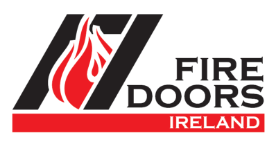About Us

OUR SERVICES INCLUDE:
WHAT IS A FIRE DOOR?
WHERE SHOULD FIRE DOORS BE FITTED?
Fire doors are a critical safety feature of any building in which people live, work or visit, as they offer resistance to the spread of fire and smoke, limit the effects whilst allowing enough time for occupants to evacuate to a place of safety.
Fire doors are required to offer two main functions:
(A) Maintain any compartmentation of buildings in order to limit fire spread;
(B) Enable access to protected escape routes such as corridors, lobbies and stairways whilst maintaining fire resistance and limit smoke movement.
The current legislation puts the responsibility for the fire safety of properties under the control of building owners and managers.
It may be a requirement of your insurance policy to ensure that fire resisting doors and escape doors are correctly installed and maintained, in order for them to be fit for purpose.
The risk assessment and the amount of traffic the doorway is subject to will determine the frequency of maintenance checks recommended.
- Weekly inspection for high usage doors, such as those in busy routes with hundreds of openings per day.
- 3 Monthly check for doors in traffic routes, main entrances and corridor doors
- 6 Monthly check for office or plant room service risers etc.
The only legal way of holding fire doors open. Should be linked to fire alarm systems.
There should be an even gap all around the door frame of no more than 4mm.
Fire doors must have three certified hinges, fitted firmly with no missing screws and not leaking oil.
Fire glazing defends against the spread of flames and smoke
Surface mounted & rebated drop down smoke seals offer a quick and easy solution to prevent smoke & toxic gas spread.
The Grille system allows air to be circulated freely throughout the building.
The system is designed with intumescent grilles meaning that in a fire situation they swell when exposed to heat and provide a fire barrier to restrict the passage of hot gases.
Swell up and expand in a fire to stop smoke and toxic gases from getting though gaps.
Check they operate smoothly and return to position
The lock must be certified.
Check your fire doors close fully against the rebated stop of the door frame. The latch should hold the door firmly in place.
In the event of fire, the intumescent hinge and lock pads rapidly expand to provide additional protection in the hinge and lock area.
Check the door is marked correctly with the appropriate signage
Look for labels or similar markings that show the door is certificated.
Check its fitted securely, free from damage and not leaking oil.

WHAT ARE THE TYPES OF FIRE DOORS?
There are many different types of fire doors available – from different materials to varying fire ratings and protection levels. The effectiveness of a fire door and the type required depends on its location in the building, and the type of fire hazards surrounding it.
A door fire performance is tested in accordance with either BS 476-22 or BS EN 1634-1 and marked accordingly. When tested to the BS 476-22 standard such doors are marked by the prefix FD, followed by its minutes-based resistance rating. Therefore, a door marked FD 30 can resist integrity failure for 30 minutes, FD 60 can resist for 60 minutes. When tested to BS EN 1634-1 standard and classified in accordance with BS EN 13501-2, doors are identified by the prefix E followed by the integrity rating expressed in minutes e.g. E30, E60.
Integrity failure happens when cracks/openings develop on the door due to the pressure of the fire, which then starts to allow hot gases and smoke to pass through. Stability failure occurs when the door starts to collapse due to the conditions.
There are glazing options with toughened fire glass that can withstand temperatures in excess of 1600°F, compared to just 250°F of standard glazing. Glass fire screens and doors can also provide performance up to 120 minutes integrity.
RESTRICTION OF ‘COLD’ SMOKE SPREAD
As well as providing fire resistance, legislation requires certain doors to limit the spread of ambient temperature ‘cold’ smoke. These doors are fitted with a smoke seal and are identified by the suffix ‘S’ when tested in accordance with BS 476-31.0, e.g. FD 30S, and suffix ‘Sa’ when tested in accordance with BSEN 1634-3 and classified under BS EN 13501-2, e.g. FD 30Sa.


